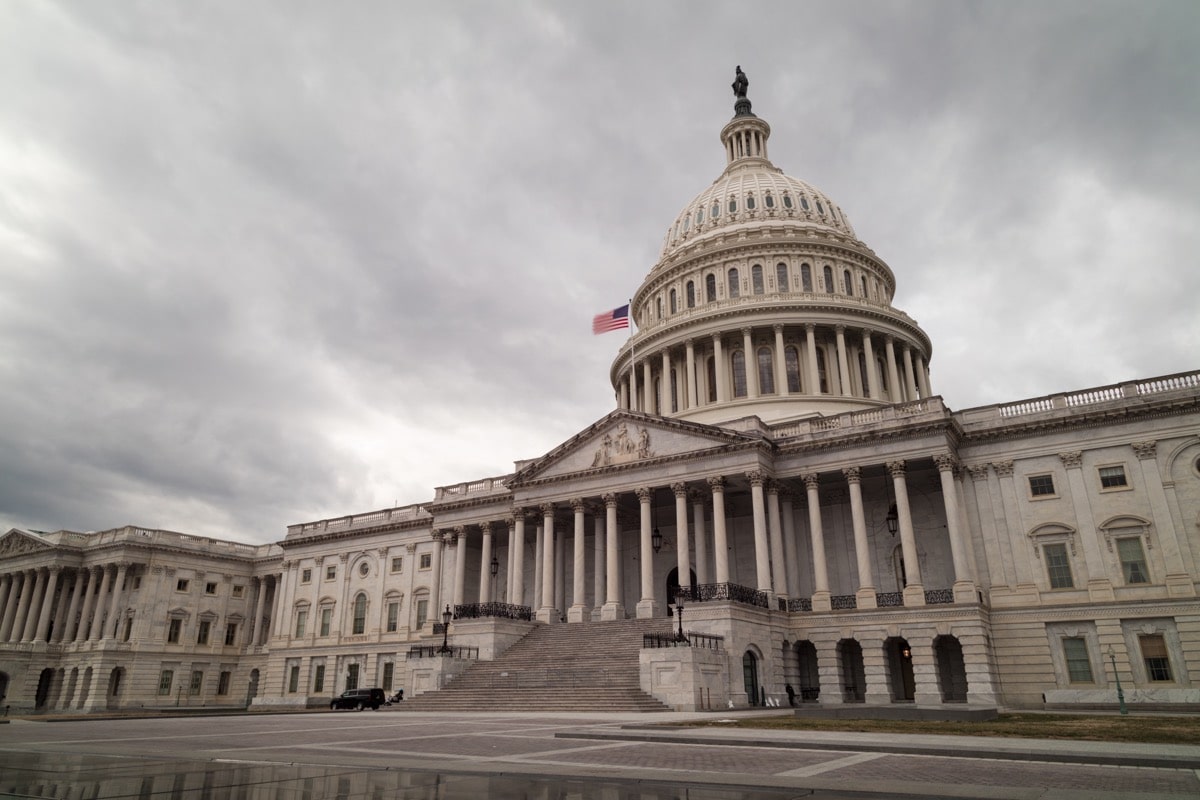A government shutdown looms over this weekend. What does it mean for American households?

A government shutdown that must occur if the US Congress doesn’t pass legislation to fund the federal government for the coming fiscal year in time might start this Sunday. The situation bears certain threats for many industries as well as for local households.
The US hasn’t seen a government shutdown in more than four years. Today, (Sept. 30) is the deadline for the government to pass the 12 annual budget appropriation bills that fund non-mandatory federal operations. However, most experts believe that will not happen in time.
The reason is political gridlock. Currently, Republicans control the House by a slim majority, while Democrats have a hold over the Senate by a single seat. That calls for a bipartisan budget approval in order for a bill to advance through both chambers to President Joe Biden’s desk. The agreement has not been reached yet, though. One of the sore points in political discussions is a demand for significant cuts in spending, including a call for no more US funding of the war in Ukraine.
As the clock is ticking, we shall remind you what a government shutdown means for the national economy and US citizens.
During a shutdown, the federal government ceases all operations that are deemed nonessential. That includes various activities ranging from air travel and national parks to tax credits and tax refunds. Discretionary spending accounted for about 27% of the $6 trillion federal budget in fiscal year 2022, affecting a third of total government departments.
Sometimes, the budget gets partially approved for some of the ‘non-essential’ departments, e.g. Defense, Education or Agriculture. In this case, they may continue operations without disruption. However, this time, lawmakers haven’t passed any of the 12 budgets.
A government shutdown may last as long as Congress doesn’t agree on a stopgap measure or pass budget resolutions that provide all federal departments with funding again. The longest term on record was 34 days between December 2018 and January 2019 under the Trump administration.
In the current economic situation, experts believe that a shutdown lasting more than two or three weeks will have a severe impact on the national economy rather than temporarily harm separate segments. Moreover, Moody’s warned that the shutdown of the United States government is a threat to global markets and may also have a negative impact on the US credit rating.
Here is how a government shutdown may affect the daily lives and finances of an average American household.
No pay to federal workers
The federal government is the nation’s biggest employer, with 4 million Americans working for the federal government, not to mention the third-party contractors.
The first and most obvious outcome of the absence of federal funding is temporary furlough for non-essential workers. Typically, the employees paid by the Departments of Defense, Labor, Education, Commerce and more are affected mostly. Those employees considered essential for public health and safety remain on the job. However, they don’t get any pay. Their paychecks are put on hold until the budget is approved. The critical services are performed, for example, by active-duty military, border patrol, Transportation Security Administration (TSA) agents, air traffic control and law enforcement. Meanwhile, government contractors have their jobs paused without any guaranteed payouts.
During the last shutdown, in 2019, the Congressional Budget Office estimated that 800,000 of the 2.1 million federal workers worked for an agency that lacked an approved budget. Nearly 300,000 of them were furloughed. This time, the numbers are expected to be bigger. Firstly, because none of the discretionary spending was approved. Secondly, federal government employment itself has grown since the 2018-2019 shutdown. Many of them live from paycheck to paycheck.
Loans, taxes and travel are affected
Customer service in governmental agencies will be performed by fewer staff. That results in longer lines in airports, delays in tax refunds and tax credits, slower processing of Medicare and student loan applications, etc. National parks and certain museums may also be closed or limit their services, due to reduced staff.
Student loan payments were suspended during the pandemic but will be restarting on Oct. 1, just as the government prepares for a potential shutdown. They are still due but school districts, colleges and universities are not going to get the funds in time, as payment processing would take longer. Besides, there could be disruptions in issuing new student loans.
Less social security benefits
Although the main social security programs (Social Security, Supplemental Security Income (SSI), Medicaid or Medicare benefits) keep functioning at any time, millions of people who rely on other government benefits might lose them.
For example, this year, the absence of funding will likely affect the Department of Agriculture’s Supplemental Nutrition Assistance Program (SNAP) and Women, Infants and Children (WIC).
Interest rates are maintained without crucial data
The decisions of Fed officials regarding interest rates are very data-sensitive. Yet, many departments that provide crucial data for such decisions (GDP, unemployment rate, inflation rate, consumer price index (CPI), etc.) won’t be able to deliver regular reports during the government shutdown. Therefore, the US central bank will rely on intuition rather than data-driven insights while fighting the most pervasive inflation in 40 years.
Inflation and market volatility may rise
Although a short-term government shutdown would unlikely to seriously threaten the national economy, the patterns of demand and supply may still be affected. Federal workers and those depending on them would likely cut their spending. Certain anxiety and uncertainty can also affect investors, as many projects are linked to federal activities, so stock market volatility may increase. Overall economic activity would also drag, although, moderately.
Many Americans have no emergency nest egg
Many American households are already suffering financially from high interest rates and inflation. Over 60% of US citizens live paycheck to paycheck. For them, even temporary delays in payment schedules are critical. More than 22 percent of Americans have no emergency savings at all, according to a Bankrate survey from June. Any emergency brings such people into a debt pit.









